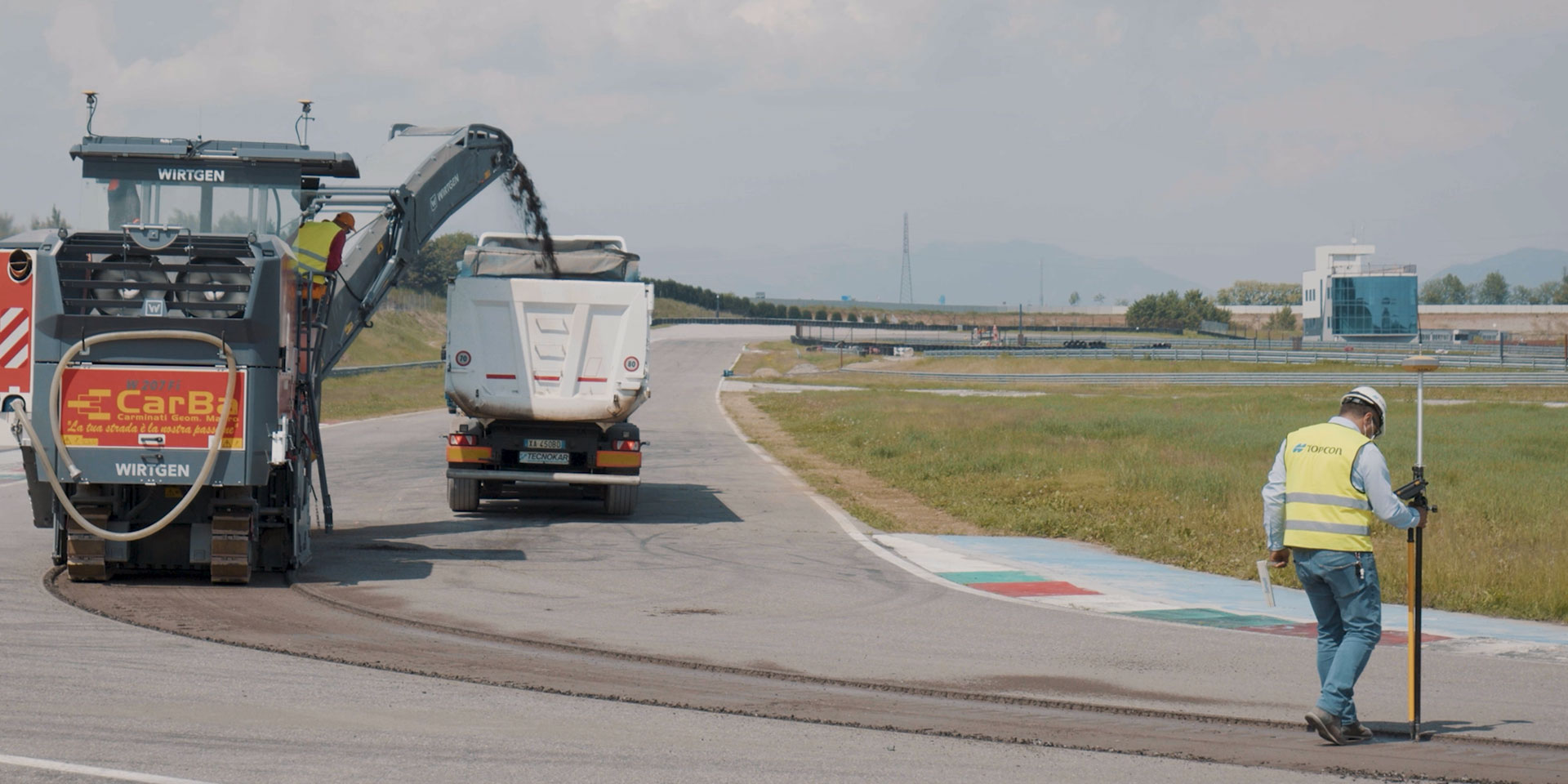The quick completion was enabled by a seamless collaboration between the contractor, design professionals and solution provider, as well as effective data sharing between the key project stakeholders.
For the milling of the track, the new surface was created using the comparison of the track models and the accurate data gathered for the design phase. This ensured an incredibly precise end result – a vital consideration for safety when dealing with high-speed motor racing, and an increase in durability of the final wearing course. The data was easily shared via the cloud with the milling machines, which were equipped with the latest 3D GNSS machine guidance solution (RD-MC). Combined, the solutions ensured an efficient milling process, which then facilitated a precise grade across the entire circuit.
When it came to laying the new surface, it was crucial that the contractor was able to monitor the asphalt temperature across the entire paving width. Thermal Mapper monitoring solution made this possible, providing key temperature information and data in real time to all stakeholders via the cloud. This essential step helped to identify and avoid any thermal segregation which is caused by temperature differences in the hot mix asphalt mat as it is laid.
“By providing constant updates to the operator, the Thermal Mapper allowed the paving process to be adjusted as it happened. Using the up-to-date information meant the operator could easily change the distance between the paver and the roller, the paving speed and more”, explains Filippo Piccoli, Site Engineer at studio Dromo.
“This was vital in order to detect thermal segregation, which can lead to cracks in the track and low-density asphalt areas. Detecting potential thermal segregation by knowing the asphalt mix’s temperature, and what it is being laid at, prevents damage to the road as it is laid and leads to a durable, lasting and safe surface. This is key for safety, especially at high speeds,” Piccoli concludes.
















